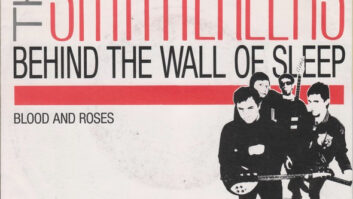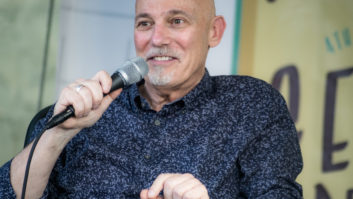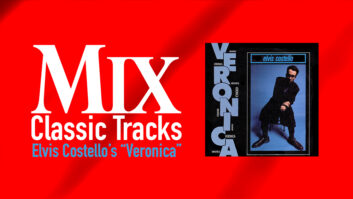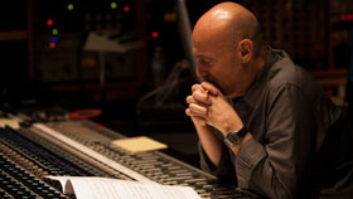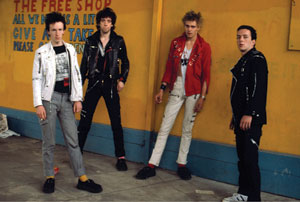
The Clash—the seminal English punk band comprising guitarist/singers Joe Strummer and Mick Jones, drummer Topper Headon and bassist Paul Simonon—only made five albums, but they recorded an immense amount of material, some of which is just seeing the light of day on Sound System, a 15-disc box that’s out this fall.
“The last album that The Clash made, Combat Rock [1982], was finished in New York and mixed at Electric Lady,” says Tim Young, who remastered all of the material for Sound System. “It was originally sequenced for a double vinyl album, but it was felt the album was overlong and unfocused, so they gave the 24-track masters to Glyn Johns and gave him carte blanche to do what he wanted. He condensed it down to the single album that became Combat Rock.
“People loved that album,” Young continues. “’Rock the Casbah’ and ‘Should I Stay or Should I Go’ were big hits. But now, people will be fascinated because [Johns] didn’t just remix the tracks; he did a lot of musical edits. This box set includes quite a few sections that people haven’t heard, even in the songs they know.”
All told, Sound System includes three CDs’ worth of demos, non-album singles, B-sides and rarities, as well as a DVD with previously unreleased concert footage. The project will also yield a five-CD box of just the original albums, and a single hits disc called The Clash Hits Back. Frequently present in Young’s studio at Metropolis Mastering during the remastering process was engineer Bill Price, who recorded and mixed London Calling and Sandinista, as well as former bandmember Mick Jones.
“Mick had been a lifelong Beatles fan, and when he heard the Beatles reissues, he was knocked out with the fact that there was lots of detail in the tracks he hadn’t heard before,” Young says. “And that was his brief to me: ‘I want people to listen to this and hear things that might have been buried before.’” For example, one of the Sound System ‘Extras’ is the single version of “White Riot,” also track 4 or 5 on the band’s eponymous debut, depending on whether you have the UK or U.S. version of the album. Fans will have already heard the percussive boot-stomps in the middle of the track, glass shattering, an alarm bell ringing. But those elements are sharper now, without changing the essential distortion and aggression of the track.

“I was working in the copy room opposite [CBS London’s] Studio 3 where they were recording [their first album] with our engineer Simon Humphrey,” Young writes in liner notes that are exclusive to Sound System. “He was a long-haired, 21-year-old prog-rock fan who amazingly quickly developed a rapport with the band, especially Mick. I used to peek through the glass door in the studio when they were laying down their backing tracks; I’d never seen anyone (before or since) attack a Telecaster with Joe [Strummer]’s ferocity!”
At Metropolis, his home for 20 years, Young uses a SADiE workstation, Prism converters and PMC monitoring, along with select outboard gear of his own choosing. “I’m a fan of the TC Electronic 6000 MKII, and I used that for a touch of limiting, but I must stress that there’s very little of that on this box set; one of the most important decisions we made early on was not to make it louder than the previous set of reissues, which were done in 1999.
There’s also a little bit of CEDAR declicking, but there’s no attempt at hiss reduction. We wouldn’t try to make any of this something that it’s not.” Young’s approach to the project was very much one of a caretaker of The Clash’s legacy. He used a modified Ampex ATR-100 machine to play the original reels, and hand-rewound the original source tapes of The Clash, which he says were so damaged that they may have been played for the last time.
“Another thing a lot of people don’t know—and I’m pretty confident I’m right on this—this is the first time that the masters on the second album, Give ‘Em Enough Rope, have ever been used for CD, because we never had the master tapes at CBS studios in London.
“That album [produced by Sandy Pearlman] was cut in San Francisco at The Automatt. An EQ’d copy tape was sent across to England, and the original masters disappeared into the Sony library somewhere. Of all the five albums, that’s the one where people will hear the biggest difference: in the guitar sounds and the whole aggression of the songs.”
